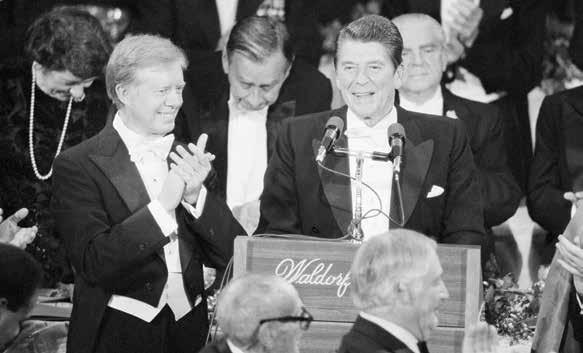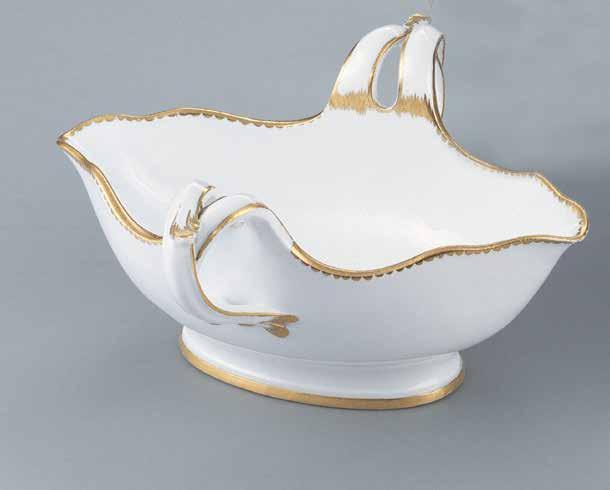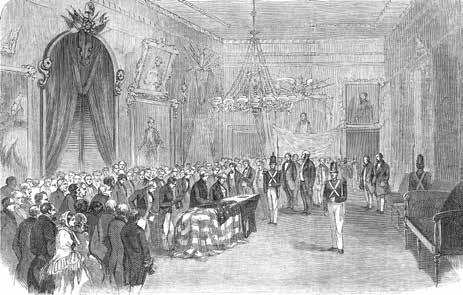
3 minute read
A FINAL REFLECTION
DAY 1,405: N ovember 4, 2015
I’m walking along the south service road of the notoriously traffic-clogged Long Island Expressway in Queens. When I reach the edge of Alley Pond Park, I look down and notice a bronze marker affixed to a boulder sitting beside the road. Placed there in 1934, it tells me that “George Washington traveled this road on his tour of Long Island, April 24th, 1790.” Imagining President Washington here conjures up an incongruous image of the presidential horsedrawn coach jammed in amid a million SUVs, stuck on the LIE in brutal rush-hour traffic, barely even moving at a crawl. George Washington Crept Here.
Enjoying the freedom of my bipedal propulsion, I cross over the LIE and head into the adjacent section of Alley Pond Park, looking for a mysterious creature known as the Queens Giant, a towering tulip tree that is thought to be the oldest living thing in New York City. But despite its soaring stature, it’s rather hard to find. Because it’s situated on a hillside, the shorter trees above it on the slope reach just as high into the sky and prevent it from sticking out noticeably.
After wandering through the woods for a bit, I finally come upon the Giant, identifiable by the chain-link fence ostensibly installed around the trunk to offer some protection to this ancient creature. But there’s a big hole cut in the fence and I duck in to take a closer look. I find a faded Parks Department information sign propped up against the base of the tree. The sign notes the Giant’s height (133.8 feet) and estimated age (400 years or more), and says that “it was standing tall when General George Washington passed close by in 1790 on a tour of Long Island,” offering a surprising resonance with the plaque I just saw beside the LIE.
Thinking about the sweep of history in New York can be a fairly abstract exercise. Even when I encounter a concrete physical link to the distant past in the form of a building or something else tangible, it’s tough for me to relate to the enormous expanse of time that has elapsed between that object’s creation and the moment when I find myself in its presence. I know it has existed all those years, but it’s done so in a kind of suspended animation that’s nothing like what a human being understands existence to be.
But the tree is something entirely different. I’m now standing next to and touching a being that
David can you make wording more legible?
hasn’t merely existed, but has actually been alive, since well before President Washington paid his visit to the area. The Giant has been spreading its roots for four centuries now, dating all the way back to when the first Dutch colonists set foot on the southern tip of an island then known to its native Lenape inhabitants as Mannahatta. This tree’s life is an unbroken chain of growth and breath, light and air, water and soil, bridging the vastness of time and connecting me to the past in a way I can viscerally feel.
Notes
1. Quoted in “History,” Fraunces Tavern Museum website, www. frauncestavernmuseum.org.
2. Kathleen Teltsch, “Carter Says the U.S. Is Willing to Slash Atomic Arsenal 50%,” New York Times, October 5, 1977, A1.
3. Lee Dembart, “Carter Takes ‘Sobering’ Trip to South Bronx,” New York Times, October 6, 1977, A1.
4. Reported in Manny Fernandez, “In the Bronx, Blight Gave Way to Renewal,” New York Times, October 5, 2007.
5. “New York City Marble Cemetery: Landmark Designation,” March 4, 1969, New York City Landmarks Preservation Commission website, www.nycmc.org.
6. Parke Rouse, “Richmond Turned Out for Monroe Reburial,” Newport News (Va.) Daily Press, September 4, 1994.
7. “President James Monroe’s Tomb,” Hollywood Cemetery website, www.hollywoodcemetery.org.
8. “President John Tyler’s Monument,” Hollywood Cemetery website.
9. Christopher Gray, “Where a President’s Widow Backed the Confederacy,” New York Times, June 20, 1999, sec. 11, p. 7.
10. Robert D. McFadden, “Lyon Gardiner Tyler Jr., 95, Grandson of 10th President,” New York Times, October 8, 2020, B11.
11. Gillian Brockell, “The 10th President’s Last Surviving Grandson: A Bridge to the Nation’s Complicated Past,” Washington Post, November 29, 2020.
12. Steven Kurutz, “Chicken Little,” New York Times, August 15, 2004, sec. 14, p. 1.
13. Allison C. Meier, “The Woman Who Refused to Leave a WhitesOnly Streetcar,” JSTOR Daily, August 15, 2018, https://daily. jstor.org.
14. Julia Jacobs, “City Will Add 4 Statues of Women,” New York Times, March 7, 2019, A18.










